
How to Use boost converter 3.7V to 5V: Examples, Pinouts, and Specs
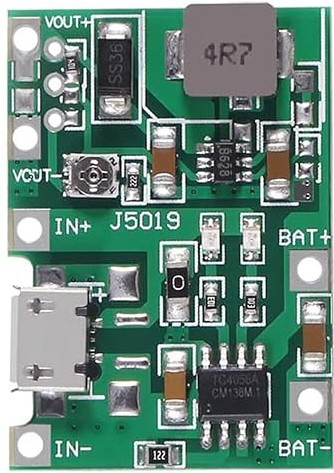
 Design with boost converter 3.7V to 5V in Cirkit Designer
Design with boost converter 3.7V to 5V in Cirkit DesignerIntroduction
A boost converter is a DC-DC converter that steps up (increases) the input voltage from 3.7V to 5V. This component is particularly useful for powering devices that require a higher voltage (e.g., 5V) from a lower voltage source, such as a single-cell lithium-ion battery (3.7V nominal). The boost converter achieves this by using an inductor, a switch (typically a transistor), a diode, and a capacitor to efficiently convert and regulate the output voltage.
Explore Projects Built with boost converter 3.7V to 5V
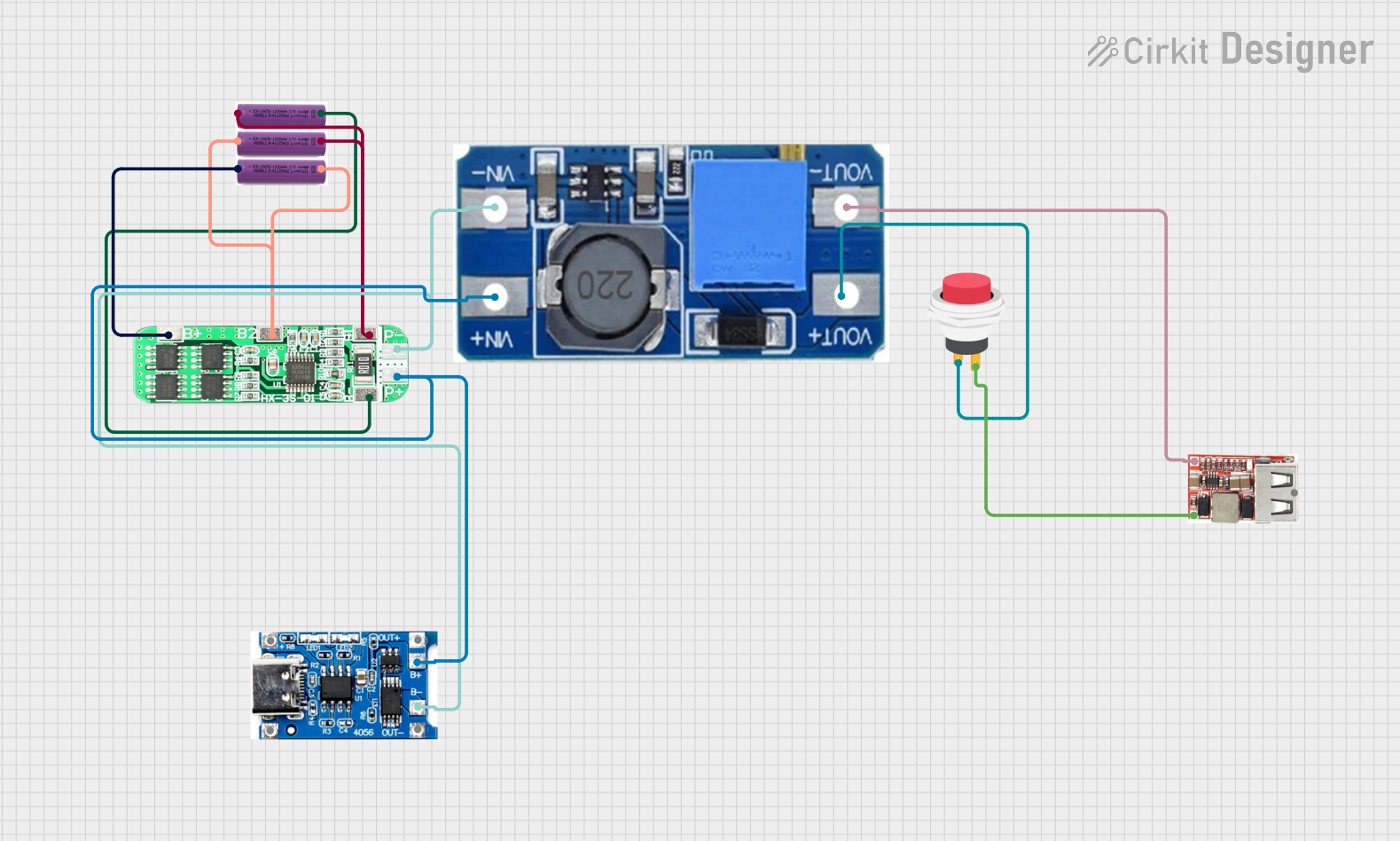
 Open Project in Cirkit Designer
Open Project in Cirkit Designer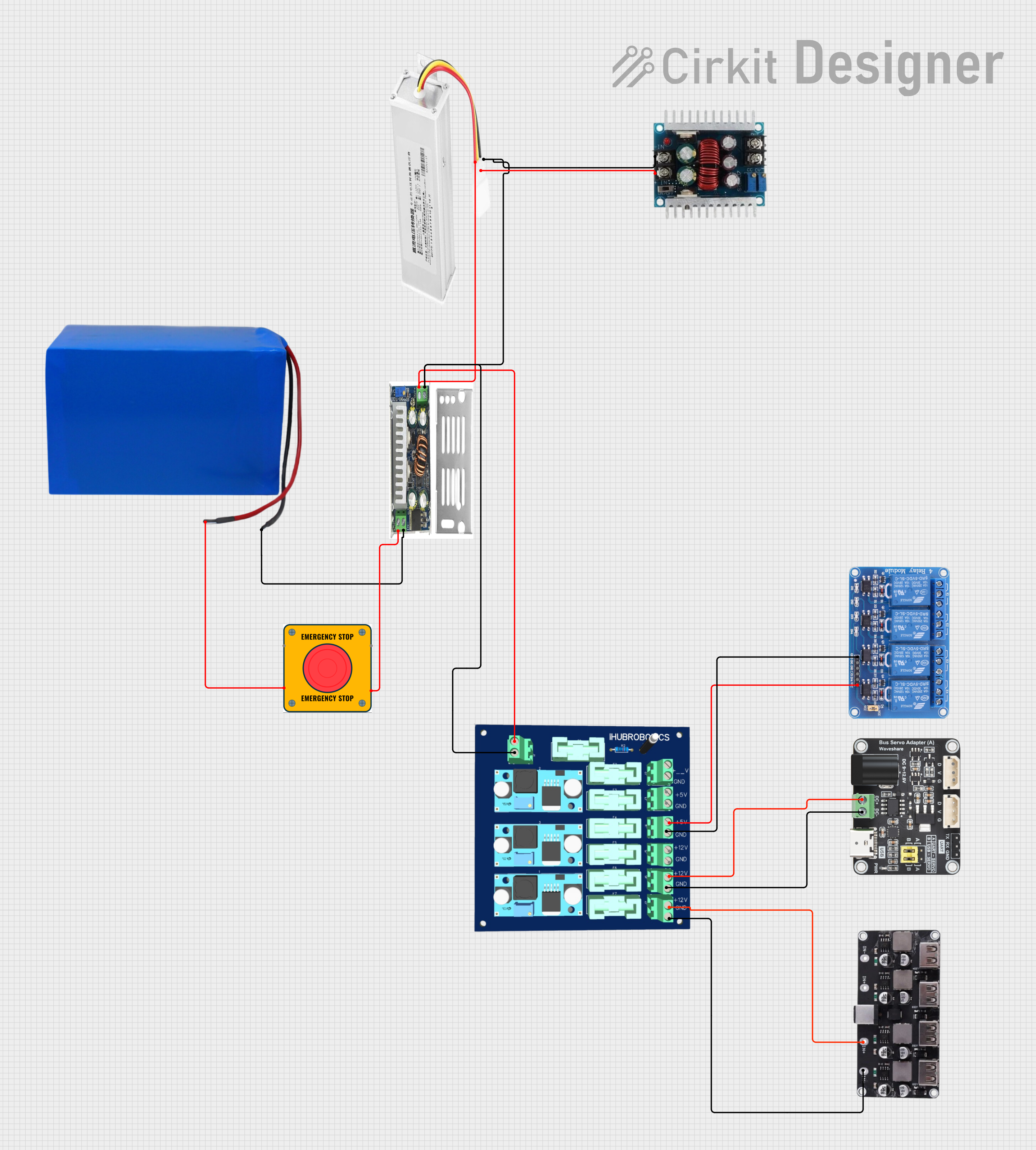
 Open Project in Cirkit Designer
Open Project in Cirkit Designer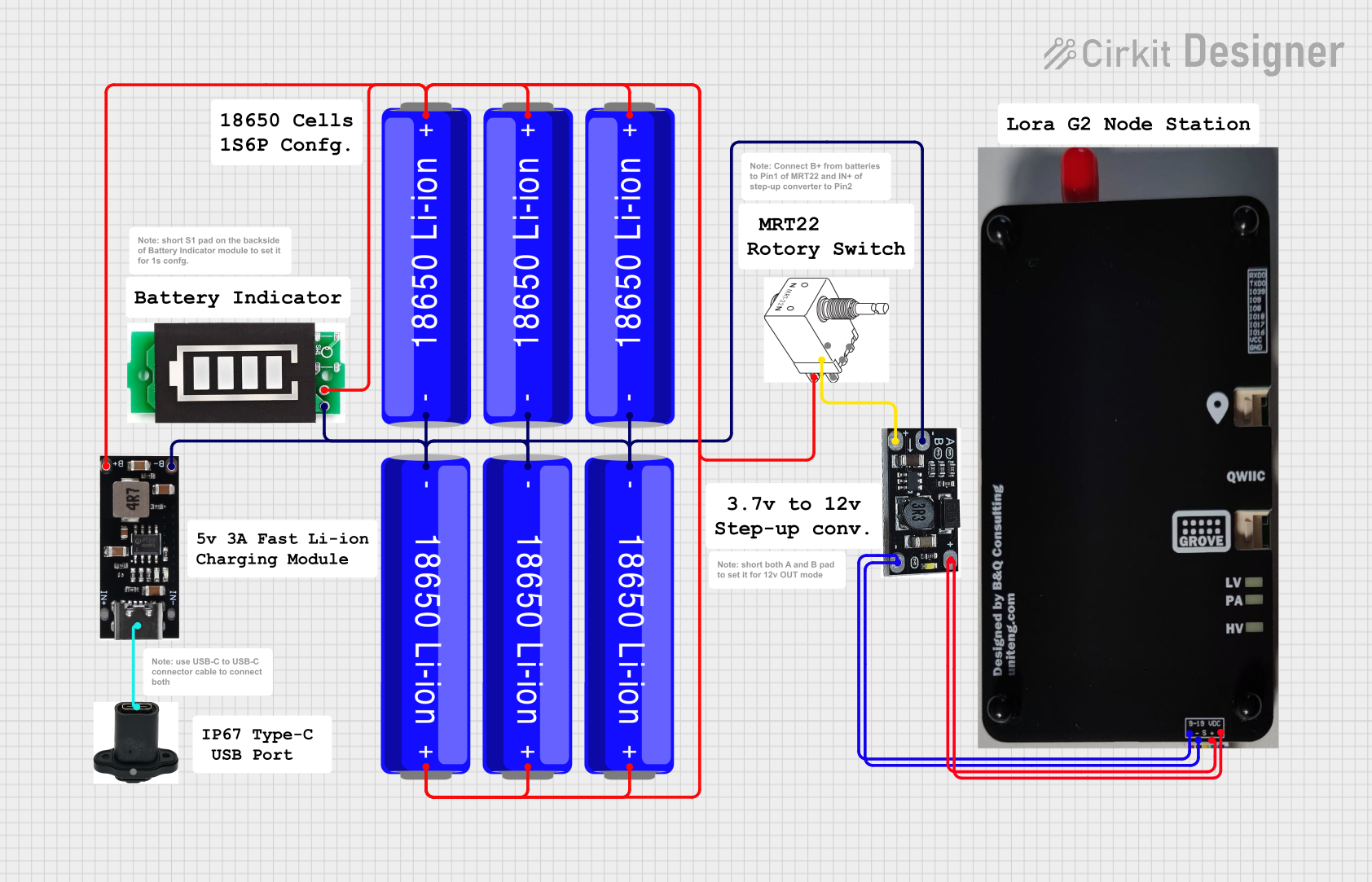
 Open Project in Cirkit Designer
Open Project in Cirkit Designer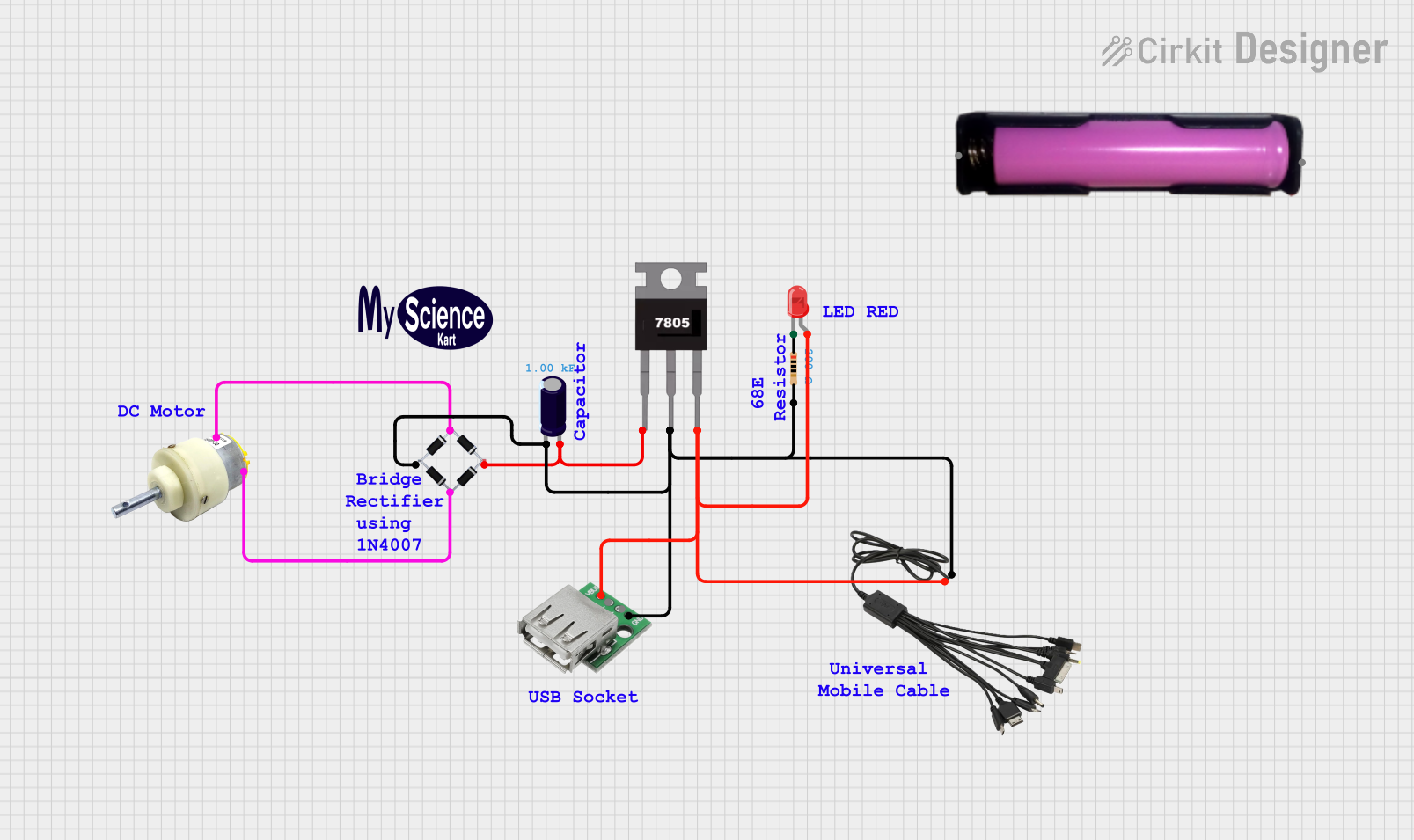
 Open Project in Cirkit Designer
Open Project in Cirkit DesignerExplore Projects Built with boost converter 3.7V to 5V

 Open Project in Cirkit Designer
Open Project in Cirkit Designer
 Open Project in Cirkit Designer
Open Project in Cirkit Designer
 Open Project in Cirkit Designer
Open Project in Cirkit Designer
 Open Project in Cirkit Designer
Open Project in Cirkit DesignerCommon Applications and Use Cases
- Powering 5V microcontrollers (e.g., Arduino, Raspberry Pi Pico) from a 3.7V lithium-ion battery.
- USB-powered devices, such as portable chargers or USB peripherals.
- LED lighting systems requiring 5V input.
- Battery-powered IoT devices and sensors.
Technical Specifications
Below are the key technical details for a typical 3.7V to 5V boost converter:
| Parameter | Value |
|---|---|
| Input Voltage Range | 2.5V to 4.5V |
| Output Voltage | 5V ± 0.1V |
| Maximum Output Current | 1A (varies by model) |
| Efficiency | Up to 90% |
| Switching Frequency | 1 MHz (typical) |
| Operating Temperature | -40°C to +85°C |
| Dimensions | Varies (e.g., 22mm x 17mm x 4mm) |
Pin Configuration and Descriptions
The boost converter module typically has the following pins:
| Pin Name | Description |
|---|---|
| VIN | Input voltage pin. Connect to the positive terminal of the 3.7V power source. |
| GND | Ground pin. Connect to the negative terminal of the power source. |
| VOUT | Output voltage pin. Provides the regulated 5V output. |
| EN (optional) | Enable pin. Used to turn the module on/off (active high). Leave unconnected if not used. |
Usage Instructions
How to Use the Boost Converter in a Circuit
Connect the Input Voltage (VIN and GND):
- Connect the VIN pin to the positive terminal of your 3.7V power source (e.g., lithium-ion battery).
- Connect the GND pin to the negative terminal of the power source.
Connect the Output Voltage (VOUT and GND):
- Connect the VOUT pin to the positive terminal of the load (e.g., a 5V microcontroller or device).
- Ensure the GND pin is also connected to the ground of the load.
Optional Enable Pin:
- If the module has an EN (enable) pin, you can connect it to a microcontroller GPIO pin or a switch to control the module's operation. Pull the pin high to enable the module or low to disable it.
Add Decoupling Capacitors (if needed):
- For stable operation, you may add a capacitor (e.g., 10µF) across the input and output terminals to reduce noise and ripple.
Important Considerations and Best Practices
- Input Voltage Range: Ensure the input voltage stays within the specified range (e.g., 2.5V to 4.5V). Operating outside this range may damage the module.
- Output Current Limit: Do not exceed the maximum output current rating (e.g., 1A). Exceeding this limit may cause overheating or failure.
- Heat Dissipation: If the module gets hot during operation, consider adding a heatsink or improving ventilation.
- Load Compatibility: Verify that the connected load operates at 5V and does not draw more current than the module can supply.
- Polarity Protection: Double-check the polarity of your connections to avoid damaging the module.
Example: Using the Boost Converter with an Arduino UNO
Below is an example of how to power an Arduino UNO using a 3.7V lithium-ion battery and a boost converter:
Circuit Connections
- Connect the VIN pin of the boost converter to the positive terminal of the battery.
- Connect the GND pin of the boost converter to the negative terminal of the battery.
- Connect the VOUT pin of the boost converter to the 5V pin of the Arduino UNO.
- Connect the GND pin of the boost converter to the GND pin of the Arduino UNO.
Sample Arduino Code
// Example code to blink an LED connected to pin 13 of the Arduino UNO
// Ensure the Arduino is powered via the boost converter (3.7V to 5V).
void setup() {
pinMode(13, OUTPUT); // Set pin 13 as an output pin
}
void loop() {
digitalWrite(13, HIGH); // Turn the LED on
delay(1000); // Wait for 1 second
digitalWrite(13, LOW); // Turn the LED off
delay(1000); // Wait for 1 second
}
Troubleshooting and FAQs
Common Issues and Solutions
No Output Voltage:
- Cause: Incorrect wiring or loose connections.
- Solution: Double-check all connections, ensuring proper polarity and secure contacts.
Output Voltage is Not 5V:
- Cause: Input voltage is too low or the load is drawing too much current.
- Solution: Ensure the input voltage is within the specified range and the load does not exceed the current limit.
Module Overheating:
- Cause: Excessive load current or poor ventilation.
- Solution: Reduce the load current or improve airflow around the module.
High Noise or Ripple on Output:
- Cause: Insufficient decoupling or poor-quality capacitors.
- Solution: Add a capacitor (e.g., 10µF or 100µF) across the output terminals to reduce noise.
FAQs
Q: Can I use this boost converter with a 3.3V input?
A: Yes, as long as the input voltage is within the specified range (e.g., 2.5V to 4.5V).Q: What happens if I connect the input voltage in reverse?
A: Most boost converters do not have built-in reverse polarity protection, so connecting the input voltage in reverse may damage the module.Q: Can I use this module to charge a 5V device?
A: Yes, as long as the device's current requirements do not exceed the module's maximum output current.Q: Is the output voltage adjustable?
A: Most 3.7V to 5V boost converters have a fixed output voltage of 5V. For adjustable output, look for a module with a potentiometer or adjustable regulator.